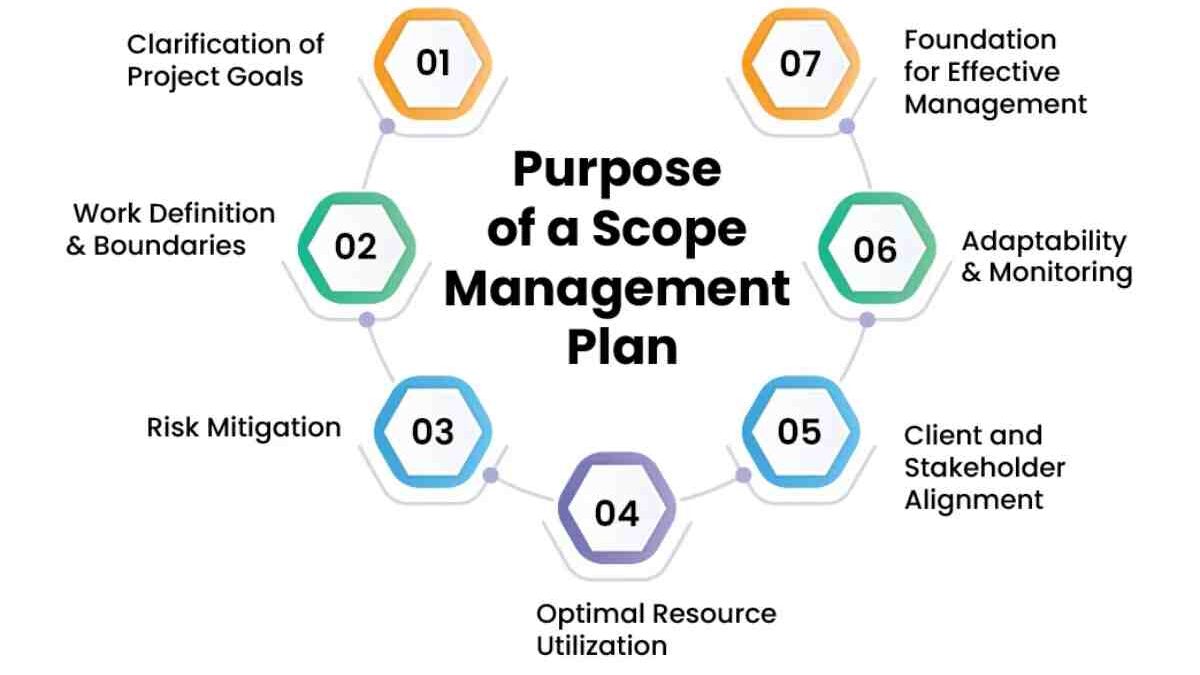Scope management refers to the set of processes that ensure that the scope of a project is precisely define and map. Scope management techniques allow project managers and supervisors to assign the correct amount of work required to complete a project, primarily by controlling what is and what is not within the project scope.
In this article, “Understanding what project scope management is and its importance in 2021”, you will learn the following topics in detail
- What is the scope of the project?
- Statement of the project scope
- Steps involved in managing the project scope
- Also, define the scope of a project
- Project scope management process
- Tips for managing project scope
- Why do project managers need scope management?:
Table of Contents
What Is The Scope Of The Project?
Scope refers to the detailed set of the deliverables or characteristics of a project. These deliverables are derive from the requirements of a project. PMBOK® defines the scope of the project as “the work that must be done to provide a product, service or result with the specific characteristics and functions.”
These are the three processes for managing project scope:
Planning
The planning process is when you try to capture and define the work that needs to be done.
Control
The follow-up and supervision processes focus on documenting the follow-up, scope drift, follow-up, and disapproval/approval of project changes.
Closure
In the final process, the closure includes an audit of the project deliverables and an evaluation of the results against the original plan.
Scope statement
The scope of a task is the clean identification of the paintings this is require to complete or efficiently supply a mission. One of the assignment manager’s obligations is to ensure that only important paintings (scope) is finished and that every of the deliverables may be entire on time and on budget.
The task scope file will explain the challenge obstacles, establish the responsibilities of every group member, and establish tactics for verification and approval of completed paintings. This documentation might also continue to be known as a scope declaration, assertion of labor, or terms of reference.
Steps Involved In Managing The Project Scope
As a project manager, you will need to define the scope of the project, whatever methodology you choose. Below is an example of a systematic process to capture, define and monitor scope.
Define project needs
Defining project needs is the first step in establishing a project schedule, allocating project resources, and defining project objectives. Only with these are define steps will you remain able to understands the work that needs to remain done. That is, the scope of the project needs to be define. Once this is done, team members can remain assign tasks and instruct to deliver a project on time and on budget.
Understand the goals of the mission.
However, to define the scope of the project, it’s miles crucial to first establish the targets of the undertaking, which may encompass a brand new product, the advent of a new branch in the corporation, or the development of latest software. There are several objectives that may be at the heart of a undertaking; the venture supervisor guarantees that the crew can provide outcomes consistent with the required traits or functions
Define the scope of the project
The resources and manpower required to create a product or service are basically what defines the scope of the project. The scope generally describes the objectives that will be achieve to achieve a satisfactory result.
Once these parameters have been establishing, the limits of the project should be clarify. And the aspects that should not be include in the project should be identify. In doing so, are the project scope will make it clear to stakeholders, top management, and team members what will and will not be includ in the final product or service.

